Interference
Important Questions on Interference
(b) This diagram shows waves, in a ripple tank, spreading out from two slits.
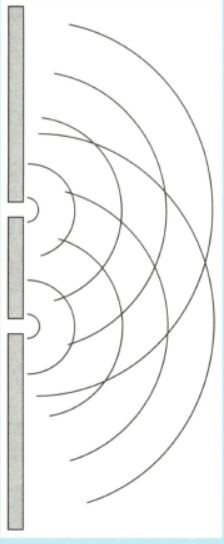
(iii) a line showing points along one of the first minima -label this line minimum.
(b) This diagram shows waves, in a ripple tank, spreading out from two slits.
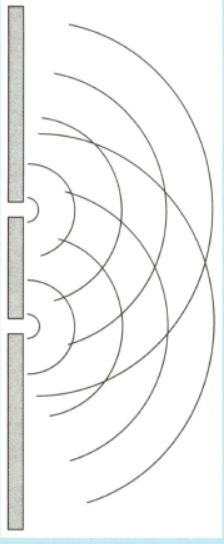
(ii) a line showing the points along first maximum - lable this line .
(b) This diagram shows waves, in a ripple tank, spreading out from two slits.
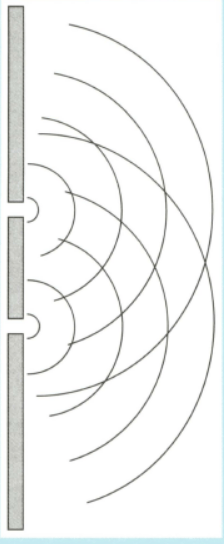
(i) a line showing points along the central maximum- label this line .
(a) Explain what is meant by destructive interference.
(b) Compare the wavelength of the resultant wave with that of the component waves.
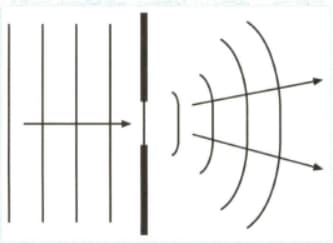
Rays of light from two coherent sources produces constructive interference. Which of the following cannot be the phase difference between these two rays?
(A)
(B)
(C)
(D)
Look at the experimental arrangement shown in Figure. Suppose that the microwave pro be is placed at a point of low intensity in the interference pattern.
Suggest what will happen if one of the gaps in the barrier is now blocked.
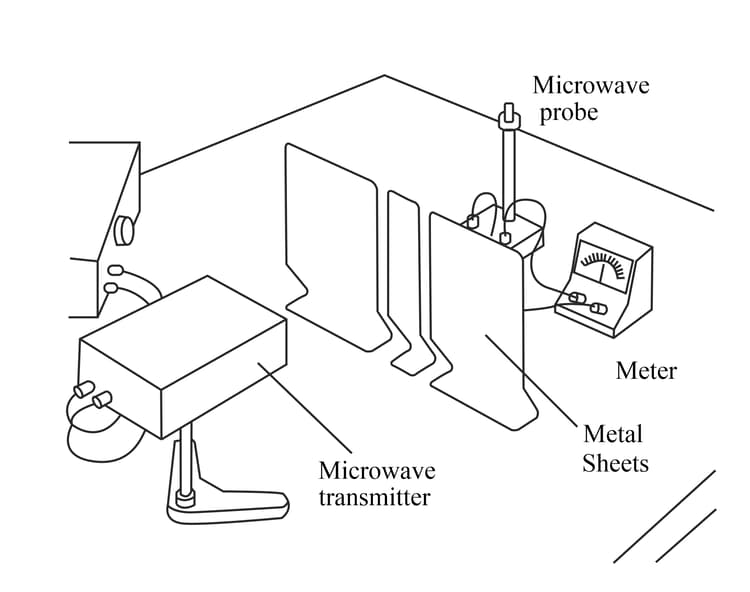
Explain why the two loudspeakers producing sounds of slightly different frequencies will not produce stable effects of interference.
A microwave oven (Figure) uses microwaves with a wavelength of . The front door of the oven is made of glass with a metal grid inside; the gaps in the grid are a few millimetres across. Explain how this design allows us to see the food inside the oven, while the microwaves are not allowed to escape into the kitchen (where they might harm us).
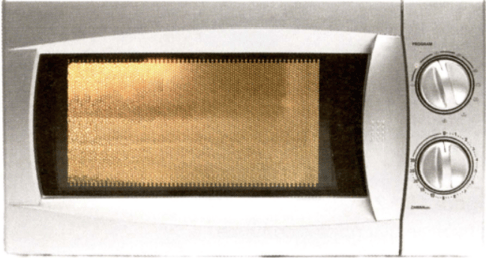
A microwave oven has a metal grid in the door to keep microwaves in and let light out

